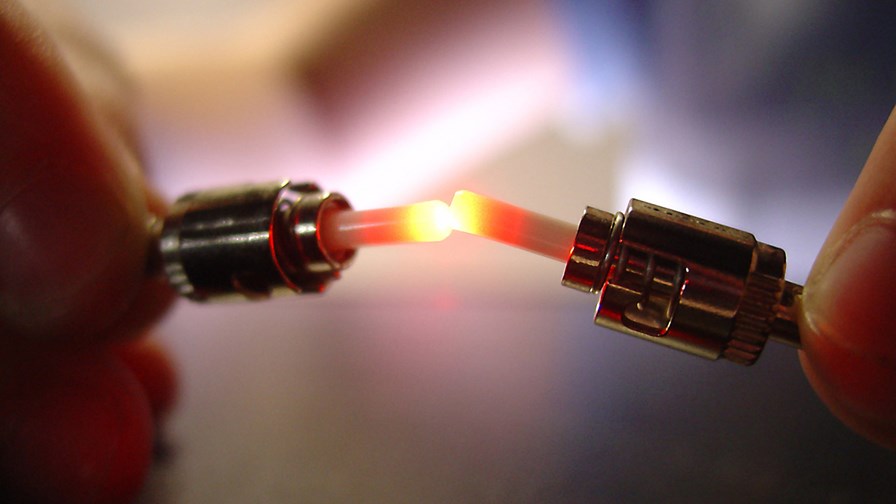New discovery permits fibre-optic cables to carry more traffic, much further, at lower cost

© Flickr/CC-licence/Barta IV
Research engineers at the University of California in San Diego say they have come up with a way to double the capacity of fibre optic cables and circuits, thus allowing network operators to carry more traffic over much longer distances whilst significantly lowering the costs of data transmission.
Currently, beams of monofilament laser light, packed in their hundreds inside a plastic carapace, still have both to be amplified and periodically regenerated as.over distance, they lose focus and deviate from their optimal path and 'bounce' from side-to-side of the fibre. The further the distance travelled the more incoherent becomes the lightwave data carrier and the more garbled the message. Certain corrective remedies such as erbium doping and tuneable lasers can and do help but signals still have to be stopped, amplified and regenerated (and, depending on circumstances, this can take place as frequently as every 120 miles or so and sometimes as infrequently as a couple of thousand miles or more) and the process of converting light into electrical impulses and back again takes time and requires expensive, sophisticated equipment.
An article in the latest edition of the influential journal 'Science' details how the scientists in San Diego “predistorted” data transmitted via laser beams so that it could be deciphered more quickly and easily over greater distances. The trick is to keep the laser light beams constrained within what is called a "frequency comb". These are incredibly precisely and regularly spaced signal points that act as guardrails to keep the lightbeams within very tight tolerances as they are loaded with data prior to transmission.
In essence, the process effectively embeds a digital watermark in the original data, which makes it possible to transmit it very accurately over much longer distances whilst dispensing with the need to effect frequent optical-to-electronic conversions at relatively short intervals.
In the article in 'Science' the research team reveal that they set a new transmission record for a fibre-optic message, sending it more than 7,400 miles under laboratory conditions without having to regenerate the signal.
The research is partly funded by Google and Sumitomo Electric Industries, a major manufacturer of fibre-optic cables cables and the new work is yet one more step along the long road towards the realisation of the elusive "all optical network".
While other optical scientists support and applaud the work done by the team from the University of California they point out that the efficacy of the advance will vary according to the type of data being transmitted, with digital video being the most demanding medium.
In May, Cisco forecast that the amount of data transmitted globally over the Internet will pass the one zettabyte mark by the end of next year, rising to two zettabytes by 2019. For movie buffs amongst you, that is the equivalent of some 250 billion DVDs being transmitted per annum by December 31, 2016.
As at the end of 2013, the latest year for which full data is available, the sum total of all information stored on the World Wide Web was about four zettabytes.
Email Newsletters
Sign up to receive TelecomTV's top news and videos, plus exclusive subscriber-only content direct to your inbox.




